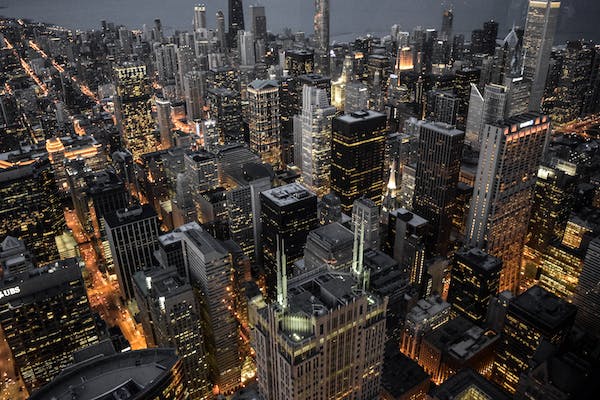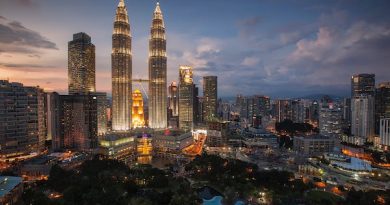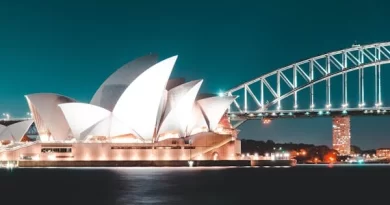Chicago: A Tale of History and Legacy
Chicago stands as a testament to the enduring spirit of a city shaped by the ebb and flow of time. With a history spanning centuries, it has weathered tumultuous events and celebrated triumphs, each leaving an indelible mark on its landscape and identity. From the ashes of the Great Fire of 1871 to the rise of the Prohibition era and the echoes of the civil rights movement, Chicago’s story is one of resilience, rebellion, and renewal.
The Great Fire of 1871: In the annals of Chicago’s history, few events loom as large as the Great Fire of 1871. Starting in a small barn on the city’s West Side, the fire raged for three days, consuming over three square miles of the city and leaving thousands homeless. Yet, from the ashes emerged a city determined to rebuild bigger, better, and stronger than ever before.
The Prohibition Era: The Prohibition era in the early 20th century brought both chaos and opportunity to Chicago. As the sale and consumption of alcohol were outlawed, the city became a hotbed of bootlegging, speakeasies, and organized crime. Figures like Al Capone rose to prominence, shaping the city’s reputation as a haven for vice and corruption.
The Roaring Twenties: Despite the challenges of Prohibition, the 1920s saw Chicago flourish as a cultural and economic powerhouse. Jazz music filled the airwaves, skyscrapers dotted the skyline, and a spirit of optimism pervaded the city. It was a time of unprecedented growth and innovation, laying the groundwork for Chicago’s future as a global metropolis.
The Civil Rights Movement: Chicago played a pivotal role in the struggle for civil rights, serving as a battleground for equality and justice. In the 1950s and 1960s, activists like Martin Luther King Jr. led marches and protests to challenge segregation and discrimination in housing, education, and employment. Their efforts helped pave the way for progress and change across the nation.
The Daley Years: The tenure of Mayor Richard J. Daley, spanning from the late 1950s to the early 1970s, left an indelible imprint on Chicago’s political landscape. Known for his iron-fisted rule and machine politics, Daley transformed the city’s skyline and infrastructure while grappling with issues of race, corruption, and urban decay.
The Cultural Renaissance: In the latter half of the 20th century, Chicago experienced a cultural renaissance that revitalized its neighborhoods and artistic scene. From the birth of improvisational comedy at Second City to the rise of the Chicago Blues, the city became a beacon of creativity and expression, attracting artists, writers, and performers from around the world.
Urban Renewal: As the 21st century dawned, Chicago embarked on a new era of urban renewal and revitalization. Neighborhoods once plagued by crime and disinvestment were transformed into vibrant cultural hubs, while ambitious projects like Millennium Park and the Riverwalk breathed new life into the city’s public spaces.
The Legacy of Architecture: Chicago’s architectural legacy is a testament to its enduring spirit and ingenuity. From the birth of the skyscraper in the late 19th century to the iconic skyline of today, the city’s architecture reflects its evolution and ambition, serving as a canvas for innovation and imagination.
Cultural Diversity: At the heart of Chicago’s story is its rich tapestry of cultural diversity. From its early days as a melting pot of immigrant communities to its present-day status as a global city, Chicago has welcomed people from all walks of life, enriching its culture and identity with their traditions, languages, and customs.
Economic Powerhouse: Today, Chicago stands as an economic powerhouse with a diverse and resilient economy. From finance and manufacturing to technology and hospitality, the city’s industries drive growth and innovation, fueling its reputation as a center of commerce and opportunity.
The Spirit of Resilience: Throughout its history, Chicago has faced adversity with resilience and resolve. Whether confronting natural disasters, economic downturns, or social upheaval, its people have risen to the challenge, demonstrating a spirit of resilience that defines the city’s character.
Conclusion:
In the tapestry of American history, Chicago’s thread shines brightly as a testament to the resilience, innovation, and spirit of its people. From the ashes of disaster to the heights of achievement, the city has forged a legacy that continues to inspire and captivate. As Chicago marches boldly into the future, its rich and fascinating history remains a guiding light, reminding us of the power of perseverance and the promise of possibility.




